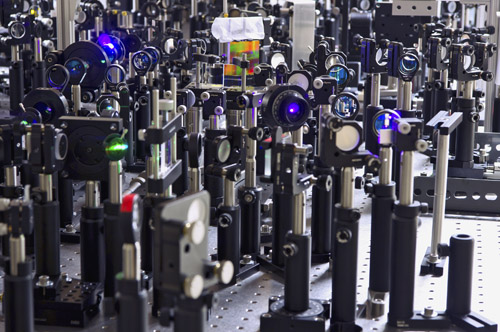BY LINDA BAKER
Dr. Chong Fang isn’t God. But the assistant professor of chemistry at Oregon State University is getting closer to figuring out how he put everything together.
 BY LINDA BAKER
BY LINDA BAKER
Dr. Chong Fang isn’t God. But the assistant professor of chemistry at Oregon State University is getting closer to figuring out how he put everything together. “This technique is bringing us to the origin of everything,” says Fang, referring to a new imaging technology that will allow scientists to observe the basic biochemical reactions responsible for life as we know it. The technique builds on green fluorescent proteins, which are found in a type of jellyfish and are used in biosensors: internal cameras capable of exploring and visualizing biological structures and functions, from cancer metastasis to the firing of neurons. Using the new technique, which incorporates advanced laser technology (“a forest of optics”), scientists will be able to record extraordinarily fast biochemical reactions — notably, the proton transfer associated with the movement of calcium ions, one of the most basic aspects of all living systems. “We now have the ability to capture molecular movies in a functional biological environment,” says Fang, who worked with researchers at the University of Alberta on the technology. The next step is to understand the molecular processes behind diseases such as Alzheimer’s and diabetes. Says Fang: “Now we can get a real grip on what is happening; we can get to the bottom of it.”

